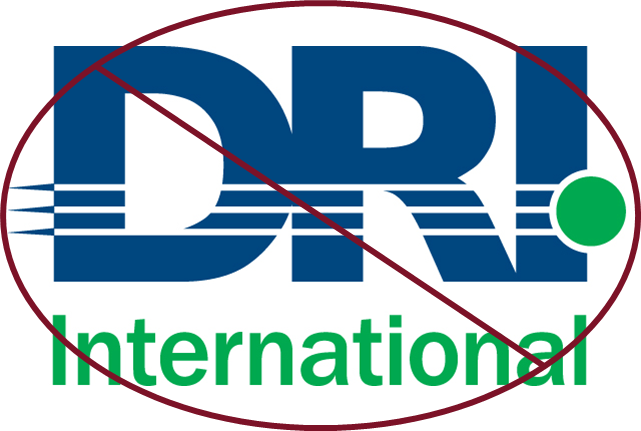The Executive Guide to Business Continuity (Series) - Part 4: Using Maturity Assessments to Drive BC Growth
Introduction
How do you know if your business continuity program is effective? More importantly, how do you identify areas to prioritize for improvement? These questions are faced by many organizations and an answer can be found in a maturity assessment. A well-designed maturity assessment that aligns with industry standards can provide a clear picture of where your program stands today and a roadmap to where it needs to go.
In this blog, we’ll explore the role of maturity assessments in driving business continuity growth, using the Business Resilience Navigator as a framework. You’ll learn how assessing the seven core essentials and three core functions can help your organization focus on what matters most, close gaps, and build a robust, integrated resilience program.
What is the Business Resilience Navigator?
It is a maturity assessment framework designed to evaluate an organization’s capabilities across seven core essentials and three core functions:
- Core Essentials:
- Leadership – Executive commitment and governance structure.
- Awareness – Employee understanding of resilience policies and their roles.
- Structure – Defined frameworks, policies, and organizational alignment.
- Collaboration – Cross-functional cooperation and information sharing.
- Metrics – Measurement and monitoring of resilience performance.
- Governance – Oversight, accountability, and compliance with standards.
- Assessments – Regular evaluations to identify gaps and track progress.
- Core Functions:
- Crisis Management – Immediate response and decision-making in disruptive events.
- Business Continuity – Ensuring critical functions continue during disruptions.
- Disaster Recovery – Restoring IT systems, data, and technology infrastructure.
By evaluating your organization against these ten areas, this assessment tool provides a comprehensive view of your resilience maturity and highlights opportunities for improvement.
Why Maturity Assessments Matter
Maturity assessments are more than diagnostic tools, they are strategic enablers that drive meaningful progress. Here’s why they’re essential:
- They Offer a Holistic View
They assess all critical aspects of resilience, ensuring nothing is overlooked. Whether it’s leadership engagement, recovery capabilities, or employee awareness, you’ll understand where your organization excels and where it needs attention. - They Prioritize Action
By identifying maturity levels across essentials and functions, assessments highlight the areas that can have the most significant impact. For example, if collaboration is weak, enhancing it might unlock efficiencies across multiple departments. - They Justify Investment
Data-driven insights from a maturity assessment can make a compelling case for increased resources or funding, especially when aligned with the organization’s goals and risk appetite. - They Enable Benchmarking and Growth
Assessments not only measure your current state but also provide a benchmark for future evaluations. Regular assessments track progress over time, ensuring continuous improvement. - They Align Resilience with Strategy
By connecting resilience maturity with organizational goals, assessments ensure that BC efforts are not just tactical responses but strategic priorities.
Breaking Down the Core Essentials and Functions
The Business Resilience Navigator evaluates ten critical areas that together form the foundation of a resilient organization and are detailed below. While other maturity assessments may include additional areas, such as Information Security, the Navigator provides a comprehensive approach to resilience evaluation.
Core Essentials
- Leadership – The commitment of executives to resilience and the presence of a clear governance structure to guide decisions and support continuity efforts.
- Awareness – The extent to which employees understand resilience policies, their roles in disruptions, and the importance of preparedness throughout the organization.
- Structure – The existence of well-defined frameworks, policies, and alignment within the organization to ensure consistency and clarity during disruptions.
- Collaboration – The degree of cross-functional cooperation and communication that enables departments to work together effectively during and after disruptions.
- Metrics – The use of measurable indicators to track the performance and effectiveness of resilience efforts, ensuring informed decision-making and accountability.
- Governance – Oversight mechanisms that ensure resilience activities align with organizational goals, industry standards, and regulatory requirements.
- Assessments – The practice of regularly evaluating and refining resilience capabilities to identify gaps, measure progress, and adapt to evolving risks.
Core Functions
- Crisis Management – The organization’s ability to respond effectively to crises through clear leadership, defined roles, and coordinated actions to mitigate immediate impacts.
- Business Continuity – The planning and execution of strategies to maintain critical operations and deliver on organizational commitments during disruptions.
- Disaster Recovery – The restoration of IT systems, data, and technology infrastructure after disruptions to minimize downtime and ensure operational stability.
Conducting an Assessment
A maturity assessment begins with defining the scope of the evaluation, gathering input from key stakeholders, and applying a clear framework to measure your current state. This process involves reviewing policies, processes, and performance across your resilience efforts, assigning maturity levels to each area, and analyzing results to identify trends and weaknesses. The outcome is a roadmap for improvement that guides your organization toward greater preparedness and strategic alignment. Follow these steps to conduct a thorough maturity assessment:
- Define Scope
Decide whether to assess the entire organization or focus on specific areas (e.g., IT, supply chain). - Gather Input
Collect data, in a workshop preferably, from stakeholders across departments, including executives, team leads, and employees. - Score Maturity Levels
Use the Navigator’s maturity scale (e.g., Initial, Defined, Managed, Compliant, Optimized) to evaluate each area. - Analyze Results
Look for patterns and gaps. For example, you might find strong leadership engagement but low employee awareness and determine that you need to effectively communicate your business continuity program across the organization. - Create a Roadmap
Prioritize improvements in critical areas. For instance, improving collaboration may enhance both crisis management and business continuity. - Monitor Progress
Reassess regularly to track improvements, adapt to changes, and maintain momentum.
Putting Assessment Results into Action
A maturity assessment is only as valuable as the action it drives. Here’s how to turn insights into outcomes:
- Focus on quick wins that demonstrate progress and build momentum.
- Use data from the assessment to secure leadership buy-in and funding.
- Share results across the organization to build a culture of resilience and engage employees in the improvement process.
Conclusion
Maturity assessments, such as the Business Resilience Navigator, provide a structured approach to evaluating and improving your organization’s resilience. By focusing on critical components tailored to your program—whether that’s leadership, awareness, crisis management, or disaster recovery—you can identify gaps, prioritize enhancements, and build a more cohesive and effective business continuity program. This flexible framework ensures that resilience efforts are aligned with your organization’s unique goals and needs, paving the way for a stronger, more adaptable future.
In the next blog, we’ll explore how an Executive Business Impact Analysis can align continuity efforts with your organization’s strategic priorities, driving even greater value from your resilience initiatives.











